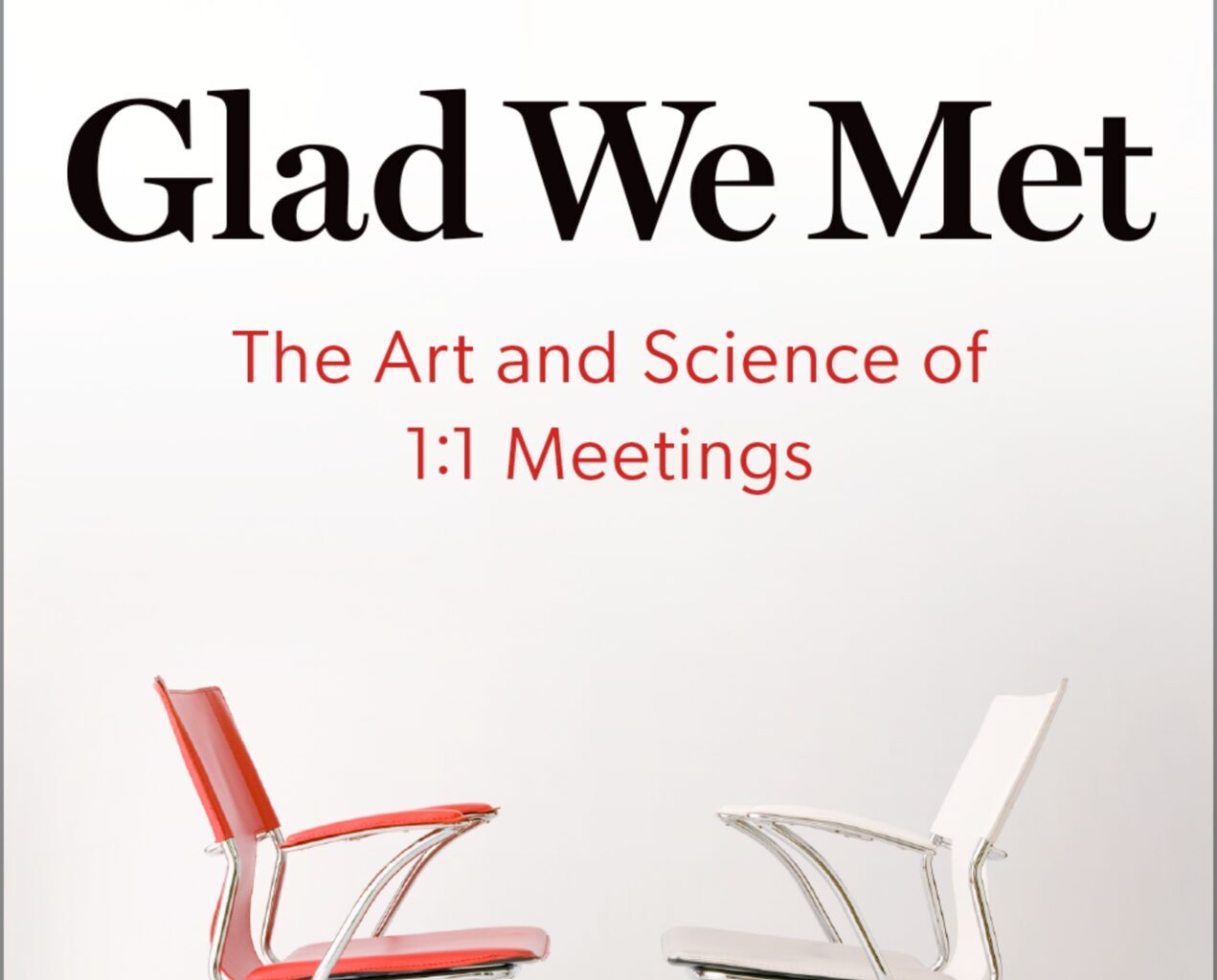This is an excerpt from “Glad We Met: The Art and Science of 1:1 Meetings” (Oxford Univ. Press),by Steven G. Rogelberg. An organizational psychologist, Rogelberg holds the title of Chancellor’s Professor at UNC Charlotte for distinguished national, international and interdisciplinary contributions. His book explores how workplaces and managers can overhaul 1:1 meetings, which remain crucial to our working lives yet often have zero impact.
It was not that long ago that children would work long hours in factories. It was not that long ago that labor could legally occur in toxic and unsafe environments. It was not that long ago that you could fire someone for being pregnant or having a disability. In fact, just over 100 years ago, the thought of having a Human Resources department in your company was met with great skepticism.
Now, it is generally recognized that elevating the human condition at work is not just the right thing to do, but a business imperative—we know that employee feelings about their job and employer affect their customer service, productivity, helping others, safety in the workplace, teamwork, innovation, and retention. It even relates to the organization’s bottom line financial results.
For example, companies with employees reporting higher levels of psychological safety (the belief you can speak up and engage with the job without fear of humiliation or punishment) perform better financially than companies with employees reporting lower levels of psychological safety. Although employees’ feelings, emotions, and attitudes about the job and organization are influenced by many different factors, 1:1 meetings play a pivotal role given their focus on addressing the direct report’s practical needs. However, of key relevance in this chapter, 1:1s also address the personal needs (e.g., feeling respected and included) of the team member.
Verizon Digital Ready: Providing Entrepreneurs the Skills and Knowledge They Need
To figure out how to best address personal needs, I surveyed directs and managers about the topic. Then, I consulted the published research. For instance, one study found that feeling listened to by your leader was associated with greater feelings of psychological safety. Integrating my data with this research, five interrelated categories of behaviors emerged as key to promoting personal needs satisfaction:
-
Listen and Respond with Empathy
When listening is coupled with empathy, conversations are significantly enhanced and serve to help the other person feel heard, understood, and truly seen.
Listen to absorb what your direct is saying rather than listening to respond. To listen effectively we need to remove distractions. There is, however, one type of distraction that we typically forget about: internal distractions. It has been found that people can think at much higher speeds than the average person speaks. Under those circumstances, it is easy to have the listener’s mind drift into thinking about other matters. Doing so limits one’s ability to listen actively and empathetically, which can negatively affect the outcome of the conversation—especially for the other person.
To mitigate this, you need to focus your full attention on what is being said and when your mind starts to wander, catch it, and redirect back to the conversation at hand.
-
Communicate Authentically and Transparently
Team members should understand your expectations and, on an ongoing basis, know about where they are meeting the mark and where there is need for improvement. This sounds easy, but clearly in practice, it is not. For example, in a global study consisting of nearly 900 participants, 72% of employees indicated that their manager did not provide critical feedback despite them wanting it. This is consistent with the extant research on how managers avoid or are reluctant to give constructive feedback to their employees.
-
Involve Directs
Directs typically want a say in how they execute their work tasks, to be involved in the decision-making that concerns them, to share ideas about problems being confronted, and to have input around changes they have to implement. After all, they are living the job each hour and each day while at work. Their boots are on the ground.
Involvement can be done readily in 1:1s by asking individuals for their opinions about an issue. For example, you can ask, “What are your initial thoughts about addressing X?”
It is important to note that there are some natural limits to employee involvement. Not all decisions can and should include a team member’s voice or input. Some broad and multi-faceted decisions are just what they are.
Get a top-rated gantt chart for free, forever.
Discover why companies like Amazon, Netflix, Nike, and Intuit manage their projects with TeamGantt.
-
Be Kind and Supportive
Kindness is behavior marked by acts of generosity, consideration, and rendering assistance or concern for others, without expecting praise or reward in return.
I don’t want to lecture the reader on how to be kind. In the case of 1:1s, one key to kindness is offering continuing support. Knowing someone is in our corner and investing in us is an ultimate act of kindness.
Subscribe to The Start, the Newsletter Built for Entrepreneurs
Help the person grow and develop by themselves, with your support, but be careful of fostering dependence. Enacting kindness does not mean you can’t hold people accountable. Accountability and kindness are not mutually exclusive in any way. Sometimes, holding people accountable is an act of kindness in itself.
Overall, being kind is essential to addressing personal needs and building a robust relationship.
-
Demonstrate Appropriate Vulnerability
As the person in a position of power, you set the norm for your meetings to be a safe place to talk about fears, worries, challenges, and goals. So, lead by example and be willing to be vulnerable and personal.
Where appropriate, share your feelings to some extent —positive or negative—to show that you trust people and to encourage them to trust you. Appropriate vulnerability from the leader helps the direct feel safer and sets the stage for building a meaningful relationship. It also implicitly creates permission for the direct to follow suit and be vulnerable as well. Overall, let your meetings be humanizing.
Conclusion
Taken together, these five behavioral categories work to meet personal needs in a reasonable way. They do not require extraordinary effort. They are reasonable and doable with attention and thoughtfulness. The outcomes will likely be your directs feeling included, respected, valued, trusted, heard, understood, supported, and psychologically safe. This is a huge win for the 1:1 and the relationship more broadly and is at the heart of effective 1:1s.
From “Glad We Met,” copyright © 2024 by Steven Rogelberg and published by Oxford University Press. All rights reserved. “Glad We Met” is available on Amazon.
AI + Data + CRM = more sales and happier customers.
Start or grow your business with the #1 CRM. Salesforce now has AI tools that helps you connect with your customers in a whole new way.








